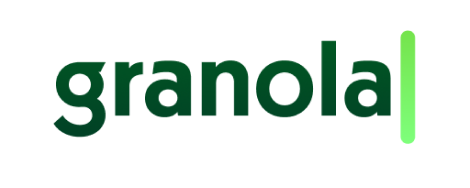The days of handwritten letters and paper contracts are coming to an end. Even the days of signing everything by putting pen to paper are long gone, which is why software that enables this capability is becoming a must-have. Signable stands out in this field with its user-friendly interface, competitive pricing and strong, personalised customer support.
With only 47 employees based in the U.K., Signable is small but mighty, serving 8,000 businesses around the world – from large corporations to small and bright-eyed startups. The company has consistently received the Great Place to Work® certification for several years in a row and believes in empowering and supporting its employees. This is why, to give staff the best means of communication and collaboration, Signable uses Slack, and the AI-powered platform has become an integral part of the business. In fact, it’s both the heart and brain of the operation.
‘Slack is business-critical for us. It’s the brain and we are the neurons. It helps us coordinate, talk to each other and get things done in the smartest way possible’, says Karen Velasquez, Head of Product at Signable. Ellie Yates, Head of Customer Success adds: ‘Slack is pivotal at Signable and vital to everything we do. It’s the beating heart of the organisation. It enables us to have a full view of the customer’s activities and communicate internally as well as with the customer to resolve challenges in real time. It’s unimaginable to think what it would be like working at Signable without Slack’.

‘Slack is pivotal at Signable and vital to everything we do. It’s the beating heart of the organisation’.
Making it simple to run projects and develop products across teams
Signable depends on reliable products, so running projects and developing solutions needs to be done as efficiently as possible. Slack steps into this space effortlessly, supercharging project management for teams, keeping everything organised and enabling centralised and effortless real-time communication. This allows teams to align immediately, simplifies cross-functional collaboration and gives all projects a home base, ticking all the boxes on their non-existent clipboard.
It even helps the company find the right projects to focus on thanks to a customer suggestion process for new and existing product features. This process includes two Net Promoter Score (NPS) channels, fantastically called #Yay and #Boo, that feed into the business CRM. #Yay gathers feedback from people who score the company a nine or above, helping the customer service team understand what works. #Boo feeds into the product roadmap, showing the areas the team could improve. This allows Signable to plan long-term future projects and react immediately to customer feedback, solving problems in the moment.
A perfect example of a Signable feature that came from customer suggestions was ‘All at Once Signing’ –allowing Signable users to send documents to all parties simultaneously, instead of using the one-at-a-time process, to get time-sensitive documents completed faster. ‘It’s something we launched last year but it had come in as a feature request through Slack’, says Velasquez. ‘Many customers had been talking about it, and because we could see all of this in Slack in real time, it got prioritised so we kicked it off, created a channel and started the project.”
Each project has a dedicated Slack channel and canvas is leveraged heavily to link to important documents and key dates as well as to a checklist to tick jobs off. This simplifies processes for all teams involved and allows for the coordination of efforts such as customer communication by marketing and updates by engineers.
When running projects, Signable is a big fan of workflows and integrations, particularly in the engineering department. Every time the team puts something into production, they post it in a Slack channel, notifying the customer teams of what is going on. They also use it for problem resolution. ‘The two core features, when it comes to solving customer issues, are the workflows and integrations’, says Abdul-latif Amadu, Engineer at Signable. A workflow is started within the relevant channel whenever there’s a problem, using integrations to link back to the original issue. The core group is pulled into the channel to find a solution quickly, sometimes even before the customer can notice it. This efficiency enables Signable to maintain 99.9% uptime.
‘It’s hard to imagine doing it any other way because it is so efficient’, he explains. ‘You start a huddle, share your screen and as people join in, all they have to do is click the relevant buttons within the workflow to assume the roles they want to take on and then we communicate right within a thread and inform everybody’. Additionally, the integrations, including Datadog and ClickUp, allow teams to streamline development, collaborate and, in the case of GitHub, see any early signs of trouble so that they can address the problem before it impacts customers.

Reducing complexity and preventing unnecessary meetings
As a lean business, Signable crosses out costly fillers and speeds things up by eliminating unnecessary meetings. With Slack, the company can democratise and unify information, enabling work to move faster across the organisation and proving that updates can be easily shared without a need for meetings.
‘Using Slack really helps reduce meetings in the data team’, says Marijn “MJ” Quartel, Business Data Analyst Lead at Signable. The team posts in channels and uses clips, canvas, threads and direct messages, which allow them to communicate clearly and effectively. ‘It feels like being in the same office even though we’re working from home’, he comments. ‘And using clips saves us a lot of time. Making my three five-minute videos a week to explain all the dashboards to the team saves about 1.5 hours per team member per week and avoids delays because not everyone can attend a 30-minute meeting the moment we need to share important information’.
Signable isn’t just doing away with unnecessary meetings. It’s also using Slack to simplify the existing ones. As Head of Customer Success, Yates has regular meetings with different departments across the organisation. If there is a conversation that doesn’t require a meeting, it’s all about huddles for her. ‘Just jumping on and talking somebody through something that might be quite complex prevents another meeting. Or indeed, you can use Slack AI to search for information or ask questions and get the answers immediately, which negates the need for a meeting altogether’.
On his end, what Quartel appreciates the most is the ability to draw on another person’s screen during huddles. ‘Especially with junior or new team members, it makes a software walkthrough or anything complex so much easier’, he says.

‘Slack AI recap is really brilliant. It’s my favourite AI function’.
Signing up for AI
‘Slack AI is amazing’, states Yates. ‘I’ve been using it a lot. I recently went to find the parameters on which our health score is measured for our customers. Instead of searching for 40 minutes to find the video where that information was contained, I asked Slack AI a question and immediately got amazing answers’.
Yates’ reliance on Slack AI is something the entire organisation shares. With channel and thread summarisation and AI recap, everyone saves time by finding the right information faster, remaining up to date on channels they’re not always involved in and catching up on work and conversations they’ve missed.
Yates estimates that Slack AI saves each team member about one hour of work every week, which adds up to 8–10 hours a week for this one team alone. When spread over the entire company, the time savings are likely quite substantial but, most importantly, they allow everyone to concentrate on more value-focused tasks and not worry about manual and time-consuming admin.
‘Slack AI recap is really brilliant’, adds Amadu. ‘The first day I used it, I learned about a very important message from one of our colleagues that I had missed. There is so much going on in all the channels and it’s sometimes easy to miss something. Now, I just hit the button and it summarises everything, including links to the relevant parts of the conversation. It’s my favourite AI function’.
This tool is particularly useful to employees after they’ve taken time off. Their first morning back at work isn’t spent going through hundreds (or thousands) of messages but through a few lines of recap. It allows them to get back to speed faster.
The AI search function is just as powerful. Velasquez encourages the customer team to use it to prevent the same questions from repeatedly popping up in channels. ‘Searching with Slack AI to get the answer reduces the noise in Slack, it allows people to really help themselves and it saves time. The search feature is increasingly becoming a vital tool for consolidating all our historical data captured in Slack’.

‘We have a response time target of less than two hours. It used to be two days. Slack enables this through internal swarming. Everybody can jump onto the query and help that customer resolve the problem’.
Supporting shared values
Signable uses Slack to support the company’s culture and enable its values to spread throughout the organisation, ending with the customer. ‘I love working at Signable because we really live by our values’, says Yates. ‘We respect autonomy, treat each other like adults and put the customer first. Slack enables us to do this because we can communicate so effectively and quickly’.
The company has signed off on speed and efficient product delivery to customers, while also ensuring visibility and transparency of daily operations, breaking down barriers and offering context for all conversations, problems and projects. This speaks to the company’s focus on customer care. For example, the team can see all mentions and escalate or share them with the product team for future product roadmaps, resulting in faster support for customers. Slack even provides trigger alerts for customer downgrades, so employees can almost immediately resolve customer issues and decrease churn.
What’s more, the company took a red pen to its response times. ‘We have a response time target of less than two hours’, says Yates. ‘It used to be two days. It’s really important that we get answers to customers very quickly and Slack enables this through internal swarming. Everybody can jump onto the query and help that customer to resolve the problem’.
Signable built its own integration with Slack that notifies a user in the channel of their choice as soon as someone signs their document, allowing them to immediately take the next step. Proving that communication is everything, Quartel summarises: ‘If we were to stop using Slack, the replacement would have some pretty big boots to fill. Huddles would be a thing I would really miss. It would remove a lot of reposts of previous chats you had with people. Many integrations would prevent visibility into what customers do or why people upgrade and downgrade. It would pretty much cripple the communication in the business’.














